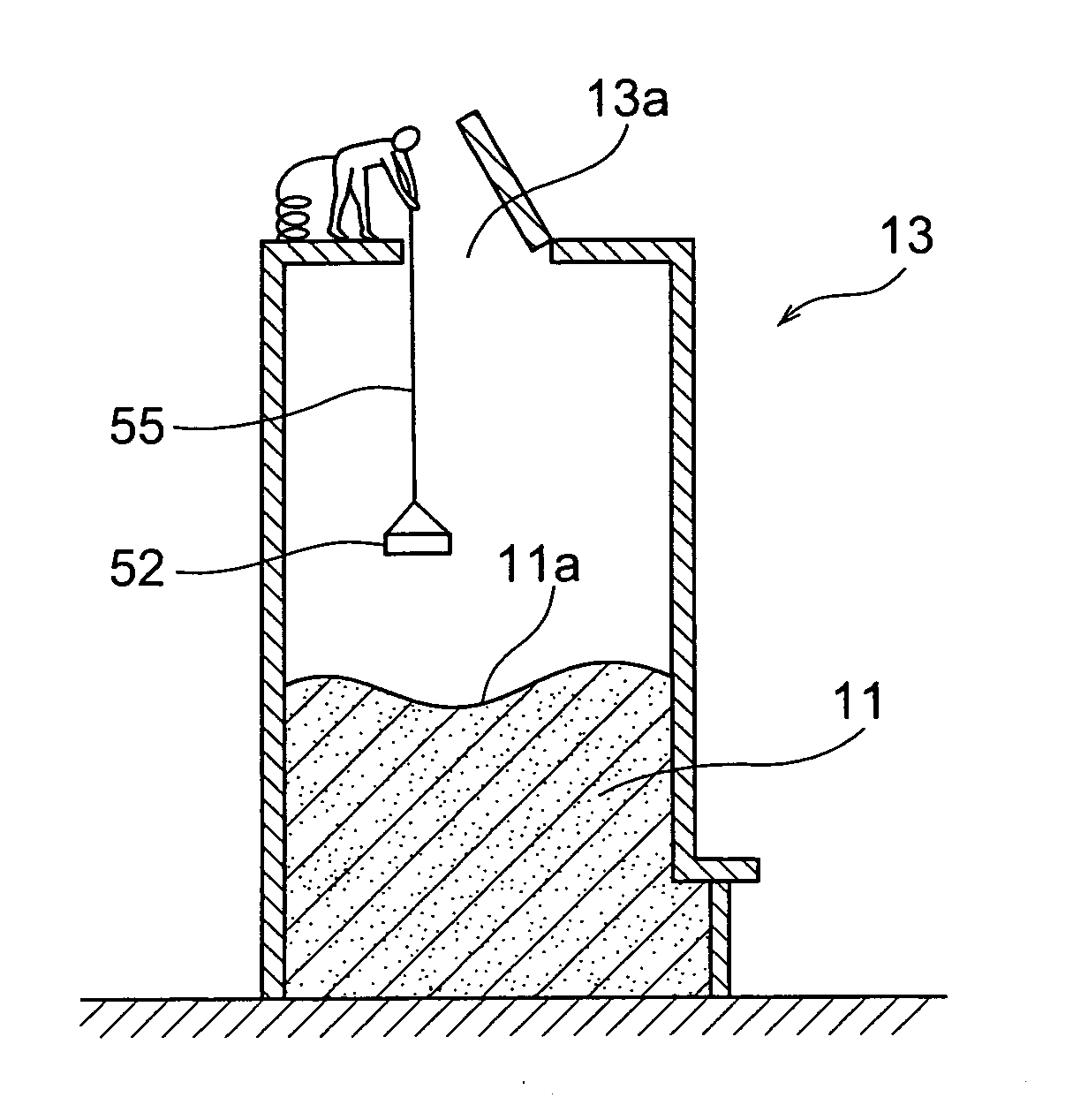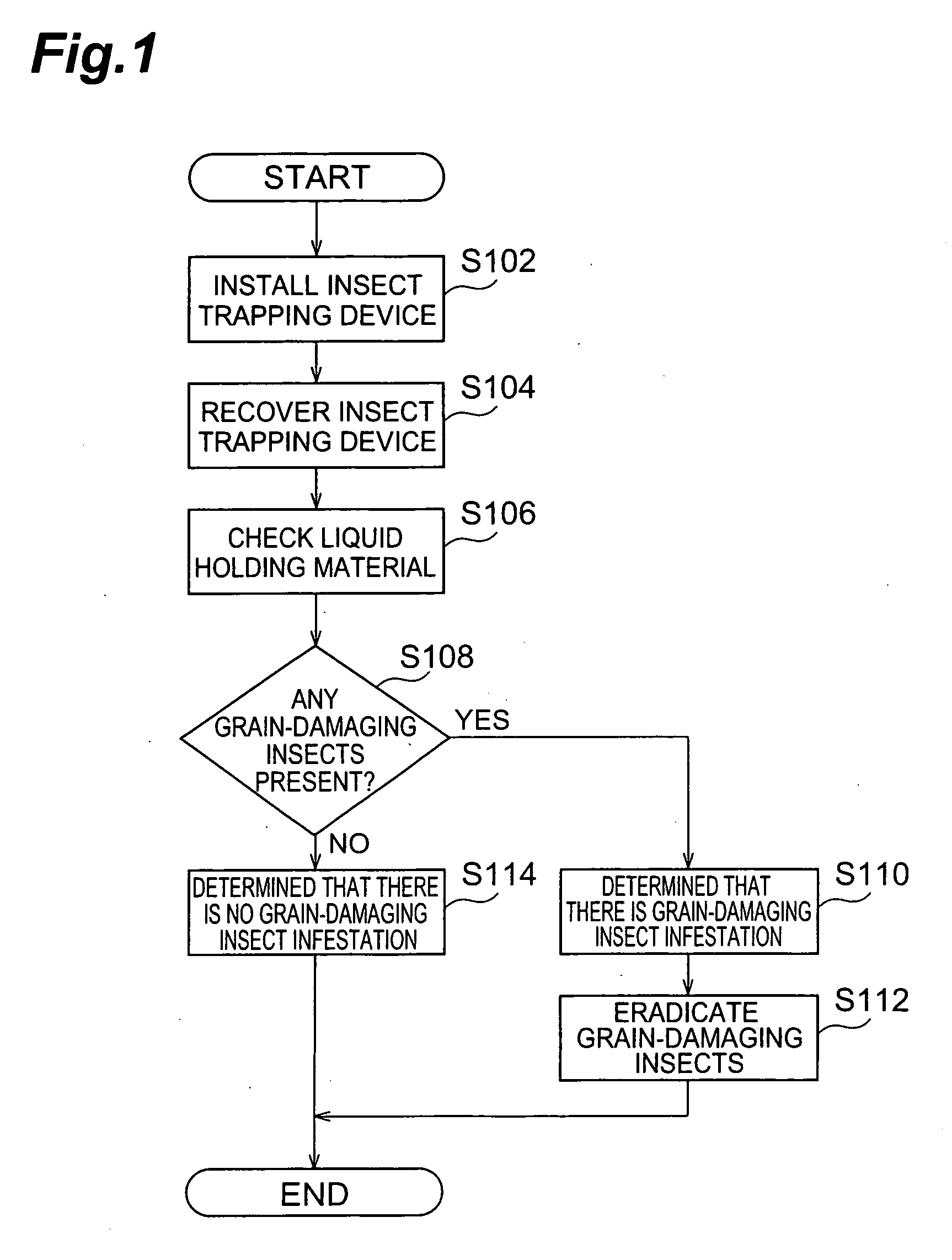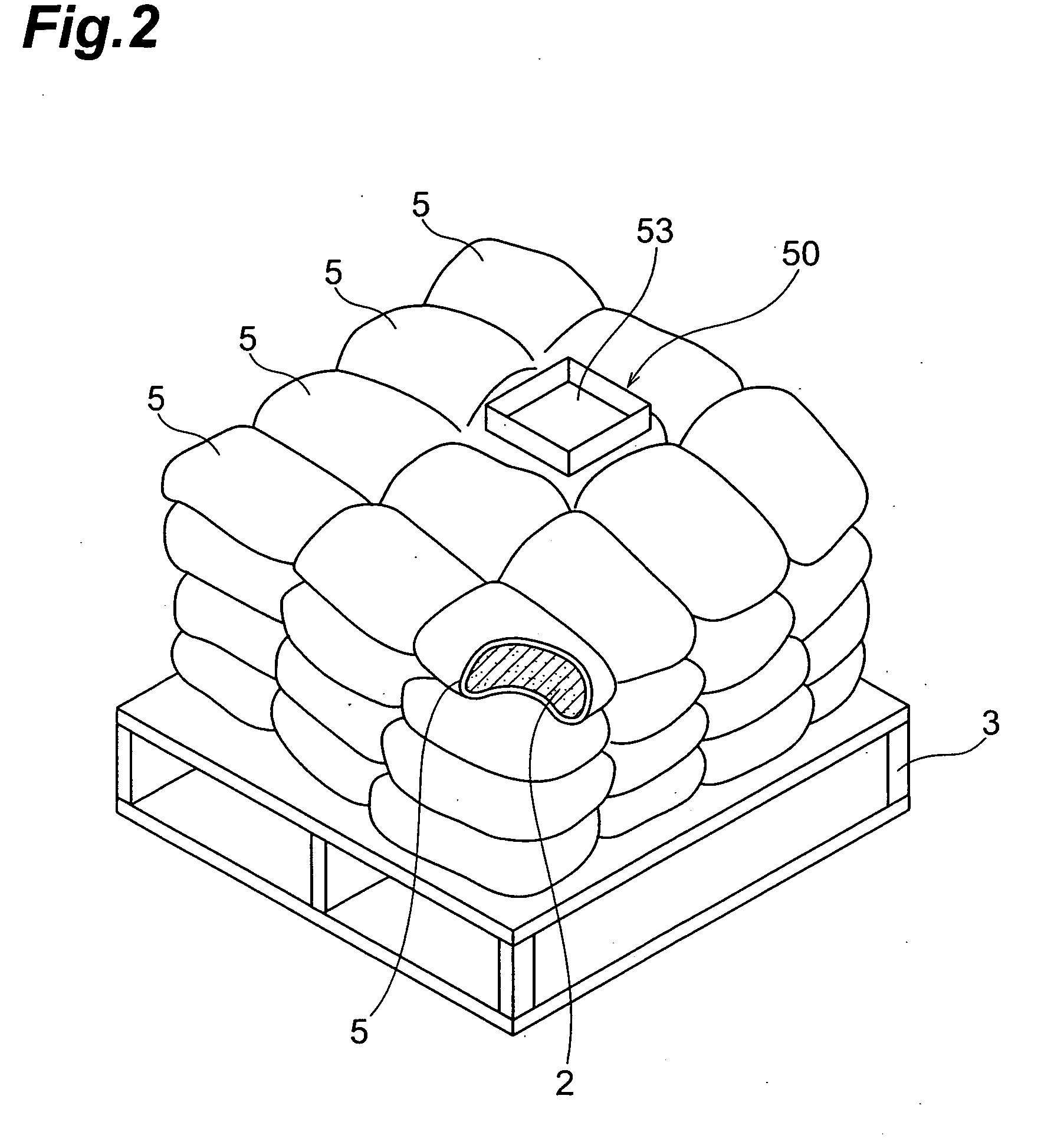Method for Detecting Infestation by Grain-Damaging Insects, and Insect Trapping Device
a technology for grain-damaging insects and trapping devices, which is applied in insect catchers and killers, animal hunting, animal husbandry, etc., can solve the problems of difficult to ensure detection accuracy, work dangerous, and considerable time and labor, and achieves less work, prevents mold growth, and accurate determination
- Summary
- Abstract
- Description
- Claims
- Application Information
AI Technical Summary
Benefits of technology
Problems solved by technology
Method used
Image
Examples
first embodiment
[0023]A first embodiment of the present invention will be described through reference to FIGS. 1 and 2. FIG. 1 is a flowchart of the steps involved in the method of the present invention for detecting infestation of grain-damaging insects, and FIG. 2 illustrates an example of how an insect trapping device 50 is installed with the method of this embodiment for detecting infestation of grain-damaging insects. In this embodiment, as shown in FIG. 2, storage bags 5 are filled with the grain 2 to be checked, and the storage bags 5 are stacked on a pallet 3 and stored in a grain storage warehouse (storage facility). The method of this embodiment for detecting infestation of grain-damaging insects is a method for determining whether or not the grain 2 stored in this form has been infested with grain-damaging insects. Examples of the storage bags 5 include bags made of woven cloth (such as linen bags made of knitted linen, and bags made of knitted plastic (such as polyethylene or polypropyl...
second embodiment
[0029]A second embodiment of the present invention will be described through reference to FIGS. 1, 3A, and 3B. In this embodiment, grain 11 is stored in the form of whole grains in a silo 13. The method of this embodiment for detecting infestation of grain-damaging insects is a method for determining whether or not grain stored in the form of whole grains in a silo has been infested with grain-damaging insects.
[0030]With the method of this embodiment for detecting infestation of grain-damaging insects, the work is performed according to the flowchart shown in FIG. 1, just as in the first embodiment. This embodiment differs from the first embodiment in the constitution of the insect trapping device 50, the step of installing the insect trapping device 50 (S102), and the step of recovering this device (S104).
[0031]The installation of the insect trapping device 50 (S102) and the recovery of the insect trapping device 50 (S104) will be described with reference to FIGS. 3A and 3B. In thi...
working examples
[0043]The present invention will now be described in more specific terms through working examples, but is not limited to the following working examples.
[0044]The number of grain-damaging insects trapped in a grain storage warehouse using water, malt extract, glucose, cooking oil, and starch as attractants was counted, and Table 1 shows the relationship between the trapped insect count and the attractant. The grain used for this test was barley stored in a silo, which had been stored for two years under ordinary conditions. The grain-damaging insects were trapped using an insect trapping device having the constitution of the embodiment given above and shown in FIGS. 4A and 4B and FIGS. 5A and 5B. The dimensions of the base of the insect trapping device used here were 235 mm long, 235 mm wide, and 15 mm deep. The porous substrate was a piece of cotton cloth measuring 220 mm long, 220 mm wide, and 5 mm thick. The insect trapping device was left in place for a period of 3 days. Cotton c...
PUM
 Login to View More
Login to View More Abstract
Description
Claims
Application Information
 Login to View More
Login to View More - R&D
- Intellectual Property
- Life Sciences
- Materials
- Tech Scout
- Unparalleled Data Quality
- Higher Quality Content
- 60% Fewer Hallucinations
Browse by: Latest US Patents, China's latest patents, Technical Efficacy Thesaurus, Application Domain, Technology Topic, Popular Technical Reports.
© 2025 PatSnap. All rights reserved.Legal|Privacy policy|Modern Slavery Act Transparency Statement|Sitemap|About US| Contact US: help@patsnap.com



